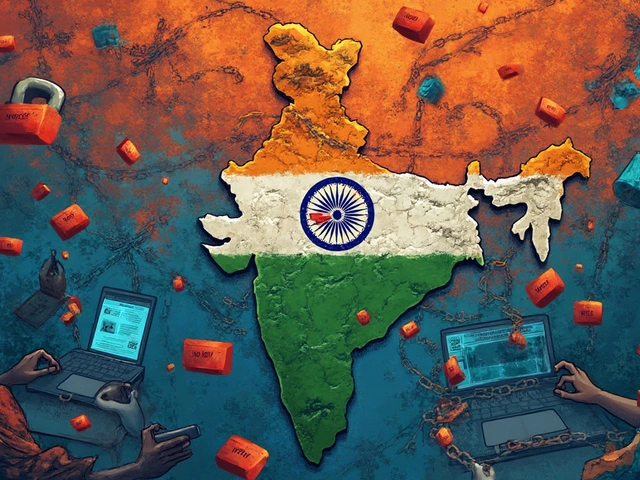Domain and Hosting Guides for Indian Websites
When working with Domain and Hosting, the combined process of securing a web address and a server space where your site lives, you enter a world that blends technical needs with brand strategy. Web Hosting, the service that provides the hardware and network resources for your website to be reachable online is the backbone, while Domain Registration, the act of claiming a unique URL that represents your brand on the internet gives you identity. Many creators also rely on Website Builder, an online platform that lets you design and publish sites without coding to speed up launch, and some tech‑savvy users explore Self Hosting, running a server on personal or rented hardware for full control. If you’re looking for reliable domain and hosting solutions, understanding how these pieces fit together is the first step.
Web Hosting encompasses server infrastructure, bandwidth, and uptime guarantees. In India, providers offer shared, VPS, and dedicated plans, each with trade‑offs. Shared hosting is cheap but shares resources, while VPS gives you a virtual slice of a server for better performance. Dedicated servers provide the highest control but cost more. When you choose a host, ask about data‑center locations—local servers can shave milliseconds off load times, which matters for user experience and SEO. Many Indian blogs start with shared plans, then upgrade as traffic grows, a pattern echoed in our collection of posts on hosting costs and provider comparisons.
Domain Registration is more than just finding an available name. Your domain signals trust, especially when you opt for a .in extension for an Indian audience. Research the registrar’s renewal fees; some offer promos that look great initially but jump at renewal. Keep WHOIS privacy in mind if you want to protect personal details. Choosing the right TLD can impact click‑through rates—brand‑focused sites often stick with .com or .in, while niche projects might use .blog or .tech. Our articles on GoDaddy, Wix, and other platforms dive into how each service handles domain registration alongside hosting.
Website Builders like WordPress, Wix, and Squarespace blur the line between domain and hosting. They bundle a subdomain, drag‑and‑drop design tools, and built‑in SEO features, making them attractive for beginners. However, they can lock you into proprietary ecosystems, limiting migration options later. If you start with a builder, consider buying a separate domain so you can move to a traditional host when you outgrow the platform. The guide on "Is Wix Really Free Forever?" shows exactly where the hidden costs appear, while the comparison of WordPress vs. Squarespace highlights performance differences that affect your site’s speed.
Self Hosting appeals to developers who want full stack control. Running a server on a VPS or a physical machine lets you install any software, tweak security settings, and avoid third‑party limitations. The downside is the responsibility for updates, backups, and DDoS protection. Our "Self Hosting Worth It?" piece walks you through a cost‑benefit analysis, showing that for small Indian blogs, shared hosting often beats self‑hosting on price and hassle, but for high‑traffic e‑commerce sites, the extra control can justify the expense.
Understanding hosting costs is crucial for budgeting. In 2025, Indian hosting prices have risen due to higher bandwidth demands and stricter data‑privacy regulations. Benchmarks show that a solid shared plan starts around ₹150‑₹300 per month, while a mid‑range VPS can range from ₹1,200 to ₹3,000. Look for providers that offer scalable resources, free SSL, and CDN integration—features that improve site speed without extra fees. Our "Why Is Website Hosting So Expensive?" article breaks down the pricing factors and offers a quick calculator to estimate your monthly spend.
SEO ties directly into domain and hosting choices. Search engines favor sites that load quickly, stay online consistently, and use secure HTTPS connections. A reputable host with an uptime SLA of 99.9% and a server close to your target audience can boost rankings. Moreover, a concise, keyword‑rich domain helps with click‑through rates and relevance signals. The "Ideal Blog Length for SEO" and "10x Rule in SEO" guides illustrate how content quality and technical performance work together, reinforcing the need for a solid domain and hosting foundation.
Below you’ll find a curated set of articles that dive deeper into each of these topics—real‑world cost breakdowns, step‑by‑step setup guides, platform comparisons, and actionable tips to help you pick the right domain, hosting plan, and builder for your Indian website. Whether you’re just starting a blog or scaling an e‑commerce store, the insights here will give you a clear roadmap to a fast, reliable, and brand‑aligned online presence.

.in Domain: Is It Only for India or Can Anyone Use It?
Curious if you can grab a .in domain even if you're not based in India? Explore what sets the .in domain apart, who can own one, surprising uses outside India, and simple tips for getting your own .in website. This article peels back the mystery around .in domains, shares real use cases, and spotlights easy rules for registration. Whether you're thinking local or global, see why .in might work for your next project. The right domain can make your web presence stand out, no matter where you are.
Jun 9 2025




